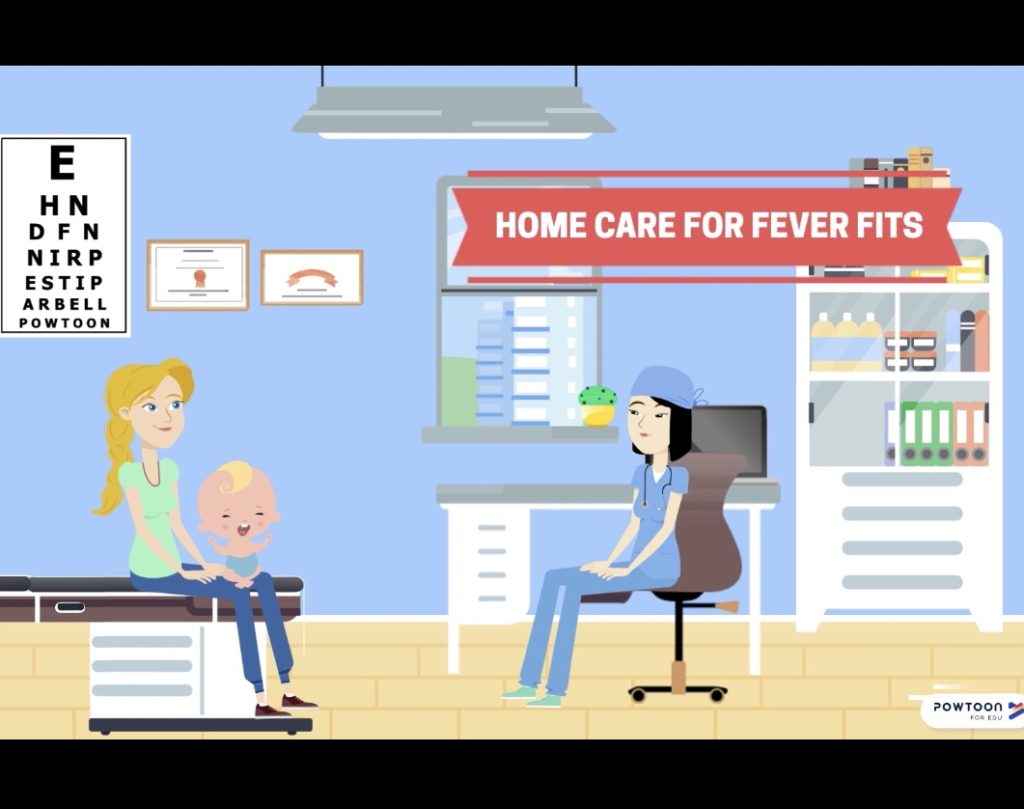When Do Fits Occur With Fever?
Simple Fever Fits
Fits caused by fever are known as febrile/fever fits/seizures/convulsions or some variation of those key words. While they may look scary, simple (typical) fever fits are pretty benign. There is a small risk of epilepsy but this is only slightly more than the risk in the general population.
More Sinister Fits
However, fits can also be caused by other febrile illnesses which are much more sinister. For instance, those involving the brain, like meningitis or encephalitis, may have serious consequences.
When the doctor asks questions and examines the child, she is probably looking for signs that the fits are complex (atypical) or that the febrile illness itself is sinister. Some of these red flags about the fever itself may be found in Let Us Talk About Fever In Children. ( Addendum 25 Feb: In fact that article was picked up by The Straits Times and was published this morning as the cover story of the Life section. https://www.straitstimes.com/lifestyle/feverish-child-stay-cool)
Figuring It Out With Figures
When Do Fever Fits Happen?
Fever fits occur in about 3-5% of children. Typical fever fits commonly occur in children between 6 months and 6 years old, particularly when the fever is rising rapidly above 38 degrees Celsius.
What Is A Simple Fever Fit?
A simple fever fit tends to last less than 15 minutes, often less than 5 minutes. During this period you may see stiffening or jerking of all four limbs, uprolled eyes, clenched teeth or incontinence. Your child will be unresponsive but this is not a cue to start CPR. Subsequently, your child may be drowsy for about 20-30 minutes. Your child is expected to wake up and be completely normal thereafter.
Who Needs To Be Admitted?
We tend to admit children who are less than 18 months old even if it is a simple fever fit. As mentioned, any child with red flags from the original fever illness should be admitted.
In addition, if there are features of a complex fever fit, we prefer to admit them for further observation. Complex fits are those that last more than 15 minutes or recur within 24 hours. Sometimes children with complex fits do not have the usual generalised seizure pattern, do not regain full consciousness after a reasonable amount of time or are unable to move an arm or leg after the seizure.
Here is a short video to summarise when you should definitely send them to the Children’s Emergency.
First Aid Facts
Do No Harm
Other than recognising the red flags for fever fits, caregiver should learn first aid, particularly as it can recur.
Lay the child on his side and allow him to breathe comfortably until the seizure ends. No matter what you’ve seen in movies, do not put anything in his mouth including medication, paper, a wooden spoon or your finger. Most parents who do this are afraid the child will bite their tongue. However if the child is lying on his side, the tongue is likely to flop away and he should be safe. I would only recommend putting your finger in his mouth to sweep out an obvious object that could obstruct his breathing, such as a fishball.
Get Help And Start First Aid
If you need to call for an ambulance, the emergency number in Singapore is 995. By the time the paramedics arrive, if the child is still fitting, they may give a suppository to stop the fit while conveying to the hospital. Here is a video to summarise first aid for a fever fit:
Final Words
I cannot describe the tremendous amount of stress that comes with working in frontline medicine. It can be overwhelming with adult patients and doubly so with pediatric patients.
Let’s say the doctor sees the patient on the first day of the illness among twenty other children presenting with fever. She cannot admit them all nor can she discharge them all. So she needs to decide, who will deteriorate. Sometimes there’s no way of knowing who is going to have a fever fit.
So the best we can do is to ask you to watch for signs that things are getting worse and to return if they do. Meanwhile, start first aid where appropriate. I hope these videos have been helpful.
